Editorial: Where is Sharpstown, Anyway? Not Everyone Agrees, And It Matters
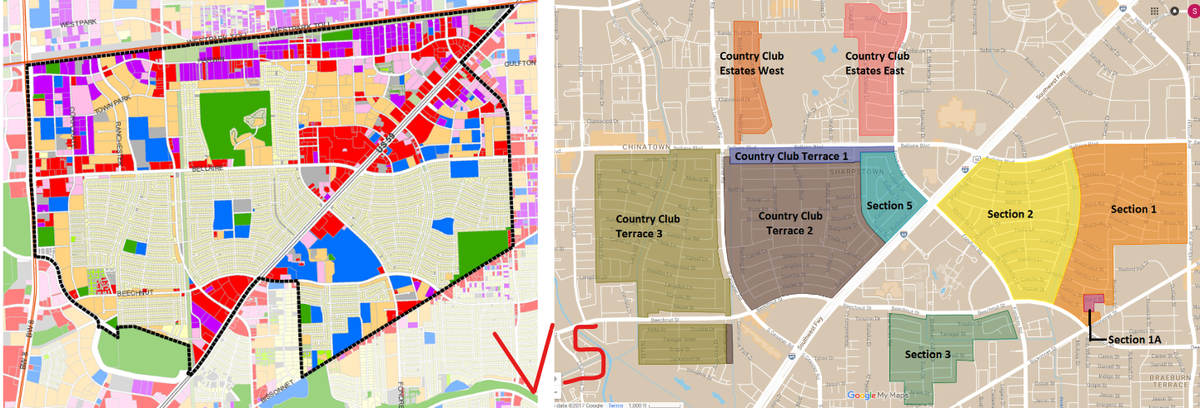
Pop quiz time. Which one of these is a map of Sharpstown?
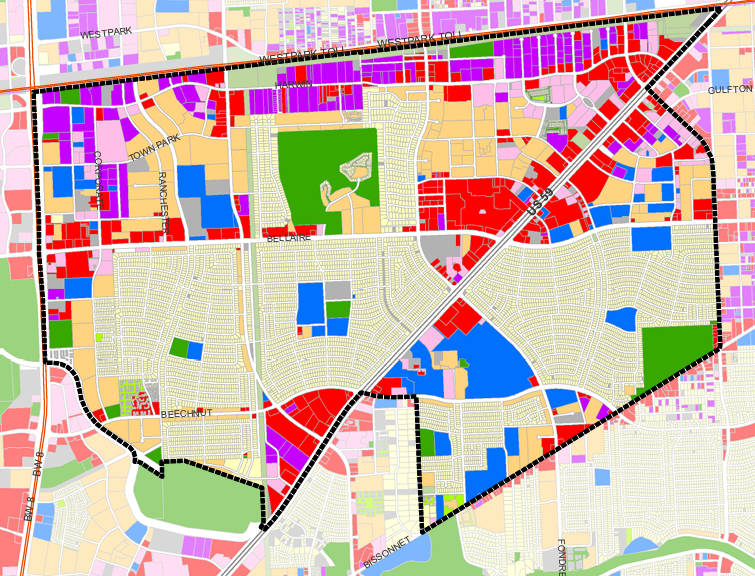
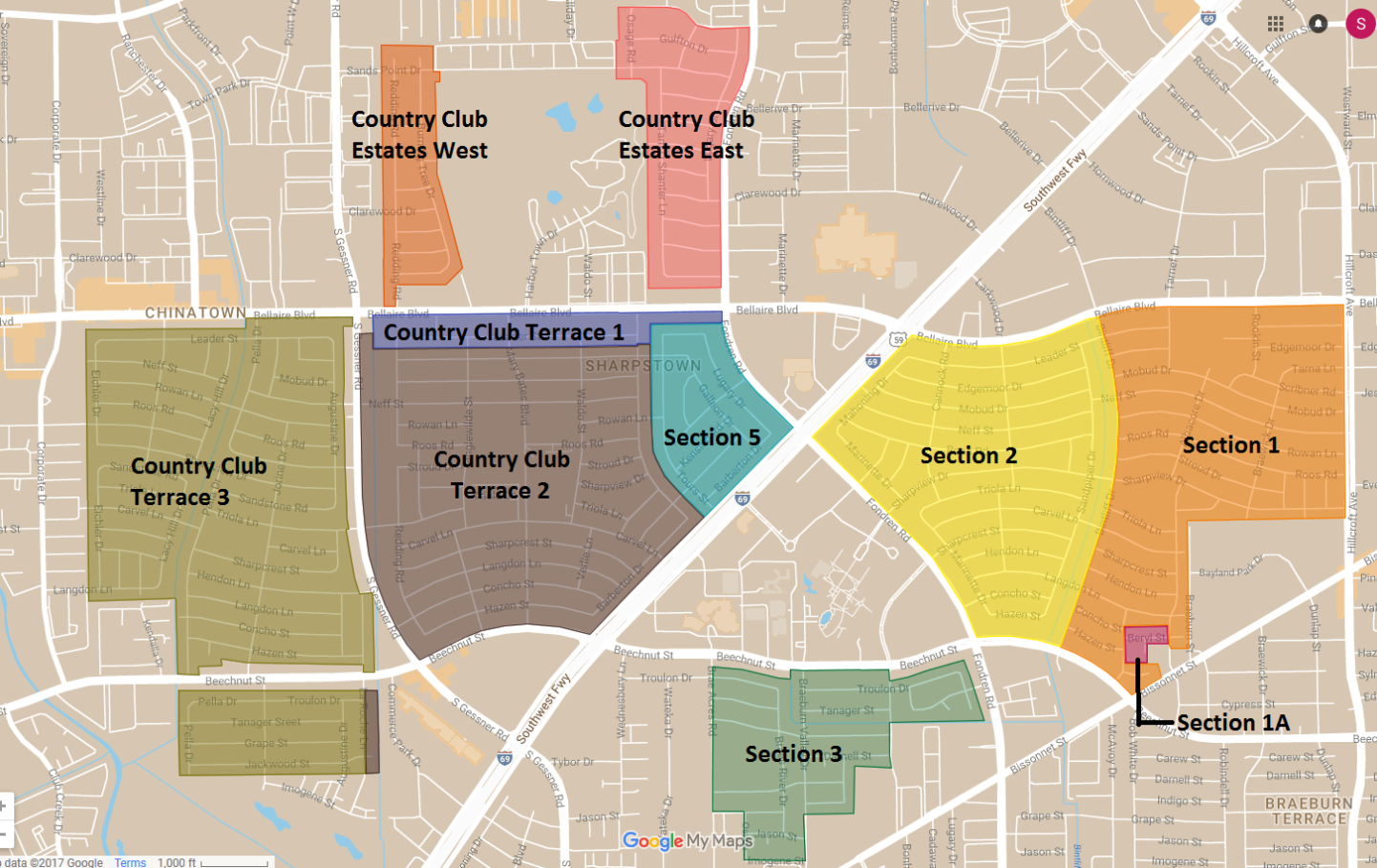
Left Image Credit: City of Houston. Right Image Credit: Sharpstown Civic Association
Not everyone agrees. Some locals say that only the map on the right counts as Sharpstown.
Why? Well, let me complicate things a bit...
You see, the first map (on the left) portrays the Super Neighborhood of Sharpstown (everything inside the thick black line). In the late 1990s under Mayor Lee Brown, Houston was split into 88 "Super Neighborhoods." This one was designated as "Sharpstown."
But the name didn't come from nowhere. "Sharpstown" was originally the name given to the local master-planned community–originally one of the world's largest—built in the 1950s by Frank Sharp. The single-family homes from that development are shown in the colored portions of the second map.
If you pay attention, you'll notice that the neighborhoods in the second map fit like puzzle pieces into the pale yellow sections of the first map. (You could say that Sharpstown is in Sharpstown.) The surrounding sections of the first map include schools, businesses, parks, apartment complexes, and more.
Nowadays, the single-family homes and duplexes in the second map are under the jurisdiction of the Sharpstown Civic Association, a neighborhood civic club that enforces deed restrictions. That brings me to the controversy.
When I tell SCA members that I live in an apartment in the Super Neighborhood, I get different responses. One member told me, "That's not Sharpstown."
I've heard several members of the SCA (but definitely not all) speak as if only the colored areas on the second map "count." In other words, only the single-family homes and duplexes in the area are part of Sharpstown. The apartments don't "count."
I understand why they say this. For years, the apartments have had higher crime rates than the single-family neighborhoods that are part of the SCA. Especially after the FBI listed 77036 and 77074 as two of Houston's most dangerous ZIP codes, some SCA members have wanted to distance themselves from the apartments. After all, who wants their neighborhood to be associated with crime?
But if we're going to define Sharpstown as "only the homes that are part of the SCA," that definition excludes a lot more than just the apartments.
Suddenly, Sharpstown High School is not part of Sharpstown anymore. Neither is PlazAmericas Mall (formerly Sharpstown Mall). Nor Sharpstown International School. Nor Houston Christian University. Nor any local churches, parks, or restaurants.
In fact, not even Sharpstown Park Golf Course, a community hub for decades, would count as part of Sharpstown under the restricted definition.
If we pretend that SCA homes are part of a gated community, then those imaginary gates will shut out far more than the apartments. Who ever imagined a "town" without stores, schools, parks, or churches?
Whether we live in houses or apartments, we all share the same community spaces. Even though Sharpstown doesn't have a Super Neighborhood Council (unlike neighboring Alief), the Super Neighborhood boundaries still express something true about Sharpstown.
And the apartments aren't all that bad, either. My complex is pretty quiet. Many of the folks who live in local houses and apartments are just hardworking immigrants–whether from Mexico, Afghanistan, New York, or North Dakota—trying to get by.
We run local businesses, take walks in local parks, attend local churches, vote in local elections, and more. Whether we've lived here for four years or forty, we all call Sharpstown home.
That's why the Sharpener unapologetically covers the entire Super Neighborhood of Sharpstown, not just the homes in the SCA.
By the way, I opened this editorial with a trick question.
The answer is both.
What do you think "counts" as Sharpstown? How unified is our Super Neighborhood, and how can we build a stronger sense of community in Sharpstown? Comment below or email me at sharpstownsharpener@gmail.com.

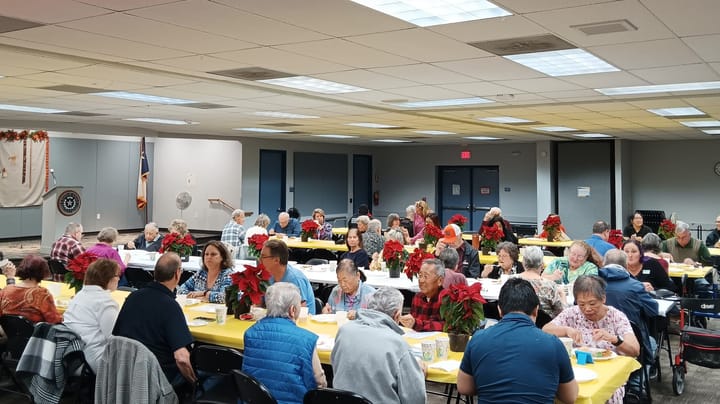
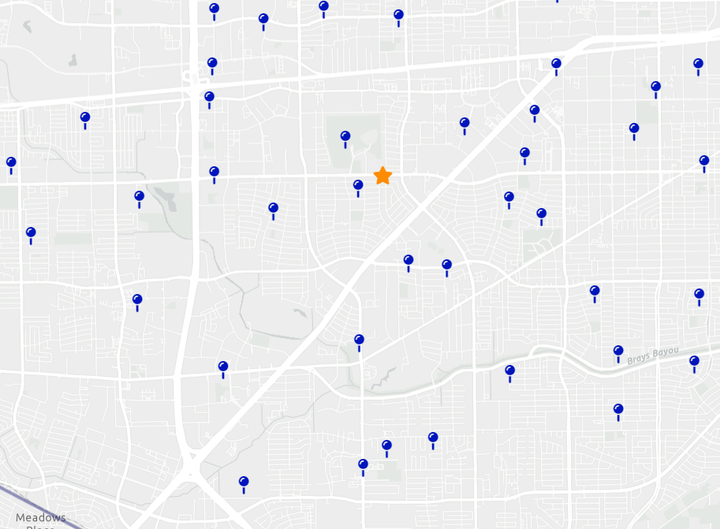
Comments ()